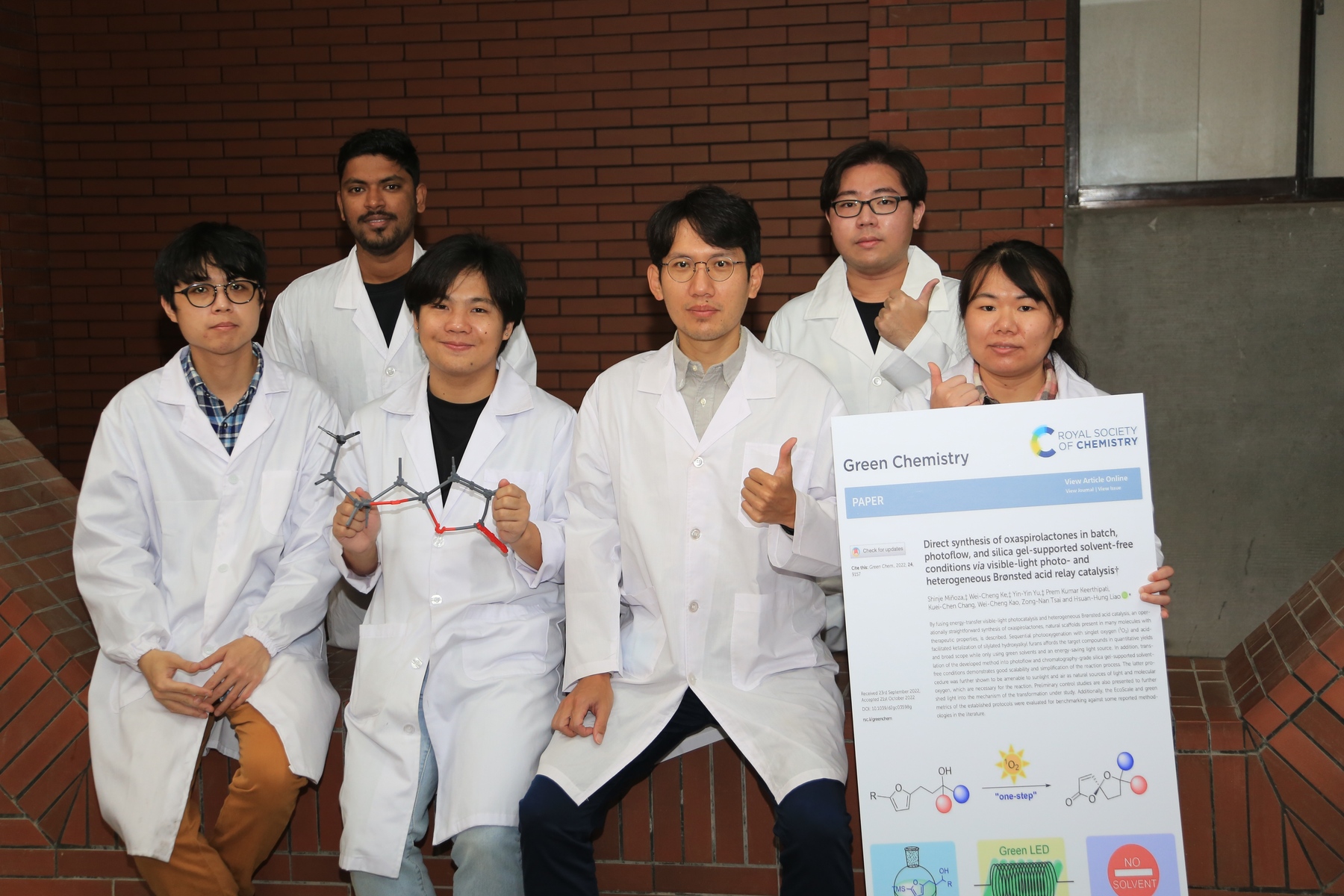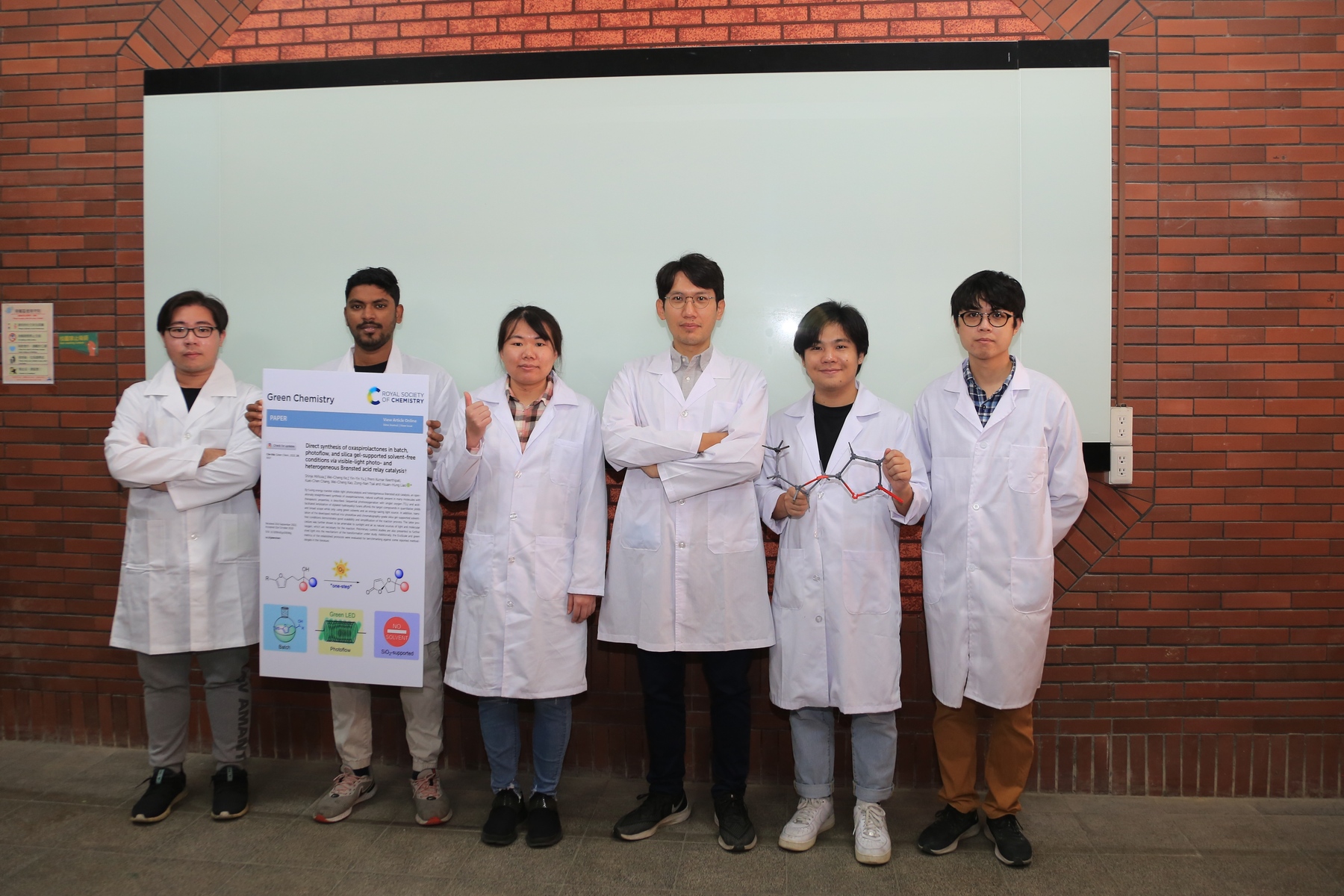National Sun Yat-sen University presents the success of innovative pharmaceutical synthesis, a milestone of sustainable green technology


2023-03-29
Oxaspirolactones are commonly found natural compounds known to possess various therapeutic effects, such as inhibiting immune responses and alleviating inflammatory diseases. However, current methodologies to prepare oxaspirolactones are rather complicated, often pose hazards, are energy and time-consuming, and are not eco-friendly. Hsuan-Hung Liao, a recipient of the Yushan Young Fellow Program and an assistant professor of the Department of Chemistry at National Sun Yat-sen University (NSYSU), successfully established a silica-supported solvent-free method for the synthesis of oxaspirolactones, along with the use of abundant natural resources such as sunlight and air in Kaohsiung as crucial ingredients. This methodology is proven more environmentally safe and cost-efficient than conventional ones. The findings have been published in the globally renowned research journal Green Chemistry.
The research team emphasized that oxaspirolactones can be found in different natural sources, such as terrestrial plants, marine organisms, insects, and even microbes. Nonetheless, only small amounts can be extracted from these resources. For example, researchers used to extract oxaspirolactones from Abies beshanzuensis, a critically endangered tree species. Extraction from these natural sources is an ineffective approach to further access the compound in significant amounts. Instead, these compounds should be synthesized in the laboratory. During the past 30 years, prominent organic synthesis experts around the globe have invested time and effort in developing synthetic procedures to obtain oxaspirolactones. However, most of the reported methods suffer from the issues mentioned above and as a result, sustainability is compromised for the sake of advancement.
“Our technique was performed under sufficient sunlight conditions in Kaohsiung. In gloomy weather where sunlight is insufficient, LED light strips or household fluorescent light bars can be used instead for the synthesis. These light sources are commonly used at home, in offices and laboratories, and even as light decorations during the Christmas season. The synthesis can be finished within 12 hours,” said Professor Liao. With sufficient sunlight, oxygen from the air, and minimal amounts of a photocatalyst, quantitative yields of oxaspirolactones of up to 99% can be obtained. Herein, no precious metals (organometallics), solvents, or toxic gases are utilized; thus, lesser chemical wastes are generated. He emphasized that the technique developed by the NSYSU team is poised to significantly expand the potential applications of oxaspirolactones in other research areas. Since the summer of 2020, Professor Liao’s research team has been utilizing energy-transfer visible-light photocatalysis, heterogeneous Brønsted acid catalysis, and silica-supported solvent-free synthesis, among others, to create innovative synthetic methodologies.
Professor Liao emphasized that at least five (5) chemical reagents, often not easily accessible, are required to operate the traditional synthesis, most of which are multi-step. The NSYSU team, on the other hand, primarily utilized sunlight and air to kick off the reaction. In addition, the innovation shortens and simplifies the operation of the reaction, not needing high technical skills from the operators. Overall, cost, time, and manpower savings for large-scale production of related products are added significant advantages.
The research team has further outlined their vision: to uplift the consciousness of green chemistry by demonstrating that promising druggable molecules such as oxaspirolactones can be prepared in an efficient, safe, and eco-friendly way. For the next stage, the team plans to develop an enantioselective synthesis to ensure the synthetic compound's safety and efficacy, aiming to minimize unwanted potential side effects associated with enantioimpurity.
The members of Hsuan-Hung Liao’s research team include the doctoral students Shinje Miñoza (First Author), Prem Kumar Keerthipati, and Zong-Nan Tsai, as well as the research assistant Kuei-Chen Chang, and master’s student Wei-Cheng Kao.
For more information, please refer to the journal: https://doi.org/10.1039/D2GC03598G
